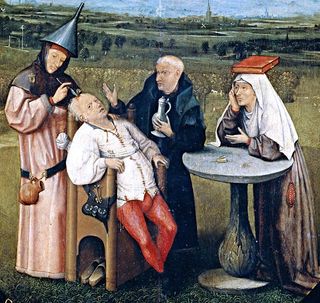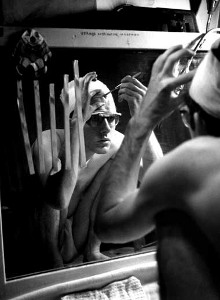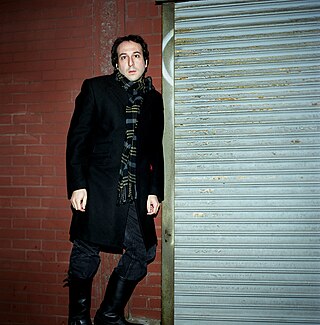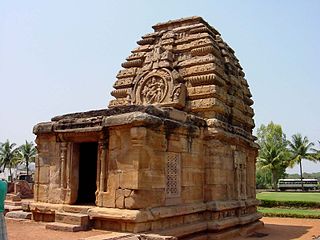Related Research Articles

Trepanning, also known as trepanation, trephination, trephining or making a burr hole, is a surgical intervention in which a hole is drilled or scraped into the human skull. The intentional perforation of the cranium exposes the dura mater to treat health problems related to intracranial diseases or release pressured blood buildup from an injury. It may also refer to any "burr" hole created through other body surfaces, including nail beds. A trephine is an instrument used for cutting out a round piece of skull bone to relieve pressure beneath a surface.

Gathorne Gathorne-Hardy, 1st Earl of Cranbrook, was a prominent British statesman and Conservative politician. He held cabinet office in every Conservative government between 1858 and 1892 and was opposed to the liberal policy of William Ewart Gladstone.

Earl of Cranbrook, of Cranbrook in the County of Kent, is a title in the Peerage of the United Kingdom, created in 1892 for Gathorne Gathorne-Hardy, Lord Medway. The Gathorne-Hardy family seat is Great Glemham House, near Saxmundham, Suffolk.

Hindu temple architecture as the main form of Hindu architecture has many varieties of style, though the basic nature of the Hindu temple remains the same, with the essential feature an inner sanctum, the garbha griha or womb-chamber, where the primary Murti or the image of a deity is housed in a simple bare cell. For rituals and prayers, this chamber frequently has an open space that can be moved in a clockwise direction. There are frequently additional buildings and structures in the vicinity of this chamber, with the largest ones covering several acres. On the exterior, the garbhagriha is crowned by a tower-like shikhara, also called the vimana in the south. The shrine building often includes an circumambulatory passage for parikrama, a mandapa congregation hall, and sometimes an antarala antechamber and porch between garbhagriha and mandapa. In addition to other small temples in the compound, there may be additional mandapas or buildings that are either connected or separate from the larger temples.
Self-surgery is the act of performing a surgical procedure on oneself. It can be an act taken in extreme circumstances out of necessity, an attempt to avoid embarrassment, legal action, or financial costs, or a rare manifestation of a psychological disorder.

Charles de Laet Waldo Sibthorp, popularly known as Colonel Sibthorp, was a widely caricatured British Ultra-Tory politician in the early 19th century. He sat as a Member of Parliament for Lincoln from 1826 to 1832 and from 1835 until 1855.
Jonathan Gathorne-Hardy was a British author, known for biographies, including one of Alfred Kinsey, and books of social history on the British nanny and public school system. For his autobiography, Half an Arch, he received the J. R. Ackerley Prize for Autobiography in 2005. He also wrote novels and children's literature. He subsequently worked in advertising and publishing.
Aladino Félix, better known by his pen name Dino Kraspedon, was a Brazilian writer, right-wing paramilitary leader, and self-proclaimed messiah of the Jewish people, who claimed in a 1959 book to have been contacted by an extraterrestrial from Jupiter. Much information of a scientific, medical, and moral nature is given in his book.
William Comyns Beaumont, also known as Comyns Beaumont and Appian Way, was a British author, journalist, lecturer, and editor. Beaumont was a staff writer for the Daily Mail and eventually became editor of the Bystander in 1903 and then The Graphic in 1932.

John Frederick Carden Michell was an English author and esotericist who was a prominent figure in the development of the pseudoscientific Earth mysteries movement. Over the course of his life he published over forty books on an array of different subjects, being a proponent of the Traditionalist school of esoteric thought.
Amanda Claire Marian Charteris, Countess of Wemyss and March, also known as Amanda Feilding, is an English drug policy reformer, lobbyist, and research coordinator. In 1998, she founded the Foundation to Further Consciousness, later renamed to the Beckley Foundation, a charitable trust which initiates, directs, and supports neuroscientific and clinical research into the effects of psychoactive substances on the brain and cognition. She has also co-authored over 50 papers published in peer-reviewed journals, according to the Foundation. The central aim of her research is to investigate new avenues of treatment for such mental illnesses as depression, anxiety, and addiction, as well as to explore methods of enhancing well-being and creativity.

In Indian architecture, gavaksha or chandrashala are the terms most often used to describe the motif centred on an ogee, circular or horseshoe arch that decorates many examples of Indian rock-cut architecture and later Indian structural temples and other buildings. In its original form, the arch is shaped like the cross-section of a barrel vault. It is called a chaitya arch when used on the facade of a chaitya hall, around the single large window. In later forms it develops well beyond this type, and becomes a very flexible unit, "the most common motif of Hindu temple architecture". Gavākṣha is a Sanskrit word which means "bull's or cow's eye". In Hindu temples, their role is envisioned as symbolically radiating the light and splendour of the central icon in its sanctum. Alternatively, they are described as providing a window for the deity to gaze out into the world.

John Hardy was a British businessman, barrister and Member of Parliament. By marriage to Lady Isabel Gathorne, he was the founder of the Gathorne-Hardy family.

Sir Thomas Phillipps, 1st Baronet, was an English antiquary and book collector who amassed the largest collection of manuscript material in the 19th century. He was an illegitimate son of a textile manufacturer and inherited a substantial estate, which he spent almost entirely on vellum manuscripts and, when out of funds, borrowed heavily to buy manuscripts, thereby putting his family deep into debt. Phillipps recorded in an early catalogue that his collection was instigated by reading various accounts of the destruction of valuable manuscripts. Such was his devotion that he acquired some 40,000 printed books and 60,000 manuscripts, arguably the largest collection a single individual has created, and coined the term "vello-maniac" to describe his obsession, which is more commonly termed bibliomania.

Hugo Bart Huges was a Dutch librarian and proponent of trepanation. He attended medical school at the University of Amsterdam, but was refused a degree due to his advocacy of LSD research and naming his daughter "Maria Juana". In 1964 he published "The Mechanism of Brainbloodvolume ('BBV')", a scroll in which he proposed that trepanation could be used to enhance brain functionality by balancing the proportion of blood and cerebral spinal fluid. Huges believed that, when mankind began to walk upright, our brains drained of blood and that trepanation allowed the blood to better flow in and out of the brain, causing a permanent "high". Using a foot-operated electric dentist drill, Huges drilled a hole in his skull on 6 January 1965. He also published "Trepanation: A Cure for Psychosis", in which he expanded upon his theory, and an autobiography, The Book With The Hole, in 1972.

Cevin Soling is an American writer, filmmaker, philosopher, musician, music producer, and artist.

James Donald Charteris, 13th Earl of Wemyss and 9th Earl of March,, also known as Jamie Neidpath, is a British peer and landowner.
Jeremiah O'Callaghan (1780-1861) was an Irish Roman Catholic priest born in 1780 in Dooneens, a townland near Macroom, Co. Cork. He was known for his views against usury and his ministries in Vermont and Massachusetts in the 19th century.
George Heywood Hill was a British bookseller, and the founder of the Mayfair bookshop Heywood Hill in 1936.

In Hindu temple architecture a sukanasa or sukanasi is an external ornamented feature over the entrance to the garbhagriha or inner shrine. It sits on the face of the sikhara tower as a sort of antefix. The forms of the sukanasa can vary considerably, but it normally has a vertical face, very often in the form of a large gavaksha or "window" motif, with an ornamental frame above and to the sides, forming a roughly triangular shape. In discussing temples in Karnataka local authors tend to use "sukanasi" as a term for the whole structure of the antarala or ante-chamber from the floor to the top of the sukanasa roof above.
References
- ↑ "Q. How do hippy aristocrats broaden their minds? A. They bore holes in their heads". Evening Standard . 14 September 1995.
- ↑ Birth date from Bore Hole
- ↑ "Like a hole in the head". The Sunday Independent . 31 August 2008.
- ↑ O'Hagan, Andrew (7 June 2018). "The Tower". London Review of Books .
- ↑ Gathorne-Hardy, Jenny (16 September 1995). "The Hole Story of my Life". The Independent on Sunday .